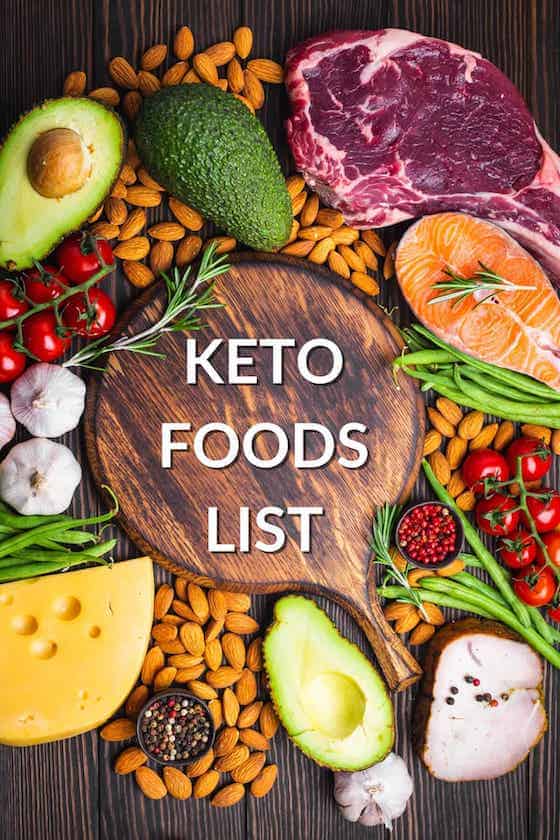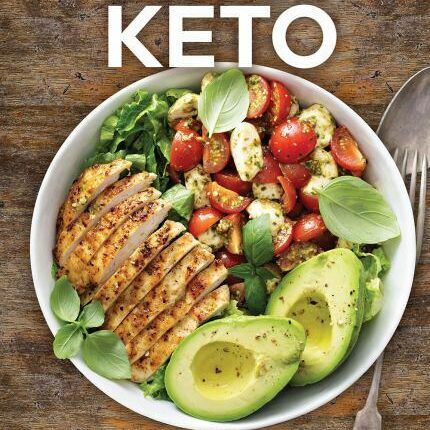The ketogenic diet, or keto diet, is a popular low-carb, high-fat diet that can help you achieve significant weight loss, improved energy levels, and better overall health. One of the key aspects of the keto diet is knowing what foods to eat and avoid. This comprehensive guide will help you understand which foods are keto-friendly and which ones to steer clear of to ensure your success on the diet.

Understanding the Keto Diet
Before diving into the food list, it’s essential to understand the basics of the keto diet. The keto diet aims to put your body into a state of ketosis, where it burns fat for fuel instead of carbohydrates. To achieve and maintain ketosis, you need to significantly reduce your carbohydrate intake and replace it with healthy fats and moderate amounts of protein.
Macronutrient Breakdown
- Fats: 70-75% of daily calories
- Proteins: 20-25% of daily calories
- Carbohydrates: 5-10% of daily calories (typically 20-50 grams of net carbs per day)
Keto-Friendly Foods
To stay in ketosis, focus on consuming the following foods:
Healthy Fats
Healthy fats are the cornerstone of the keto diet. They provide the primary source of energy and help you stay satiated.
- Avocados: Rich in monounsaturated fats, fiber, and potassium.
- Olive Oil: A staple in Mediterranean diets, known for its heart-healthy properties.
- Coconut Oil: Contains medium-chain triglycerides (MCTs) that can boost ketone production.
- Butter and Ghee: High in saturated fats and ideal for cooking at high temperatures.
- Lard: Rendered pork fat, great for frying and baking.
- Nuts and Seeds: Almonds, walnuts, macadamia nuts, chia seeds, flaxseeds, and pumpkin seeds (in moderation).
Protein Sources
Moderate protein intake is essential to maintain muscle mass and overall health.
- Meat: Beef, pork, lamb, and veal. Opt for grass-fed and organic options when possible.
- Poultry: Chicken, turkey, and duck.
- Fish and Seafood: Salmon, mackerel, sardines, trout, shrimp, and crab. Fatty fish are especially beneficial due to their omega-3 content.
- Eggs: Versatile and nutrient-dense, eggs are an excellent protein source.
- Dairy Products: Cheese, cream, and Greek yogurt (full-fat versions).
Low-Carb Vegetables
Non-starchy vegetables are low in carbs and high in fiber, vitamins, and minerals.
- Leafy Greens: Spinach, kale, arugula, and lettuce.
- Cruciferous Vegetables: Broccoli, cauliflower, Brussels sprouts, and cabbage.
- Other Vegetables: Zucchini, bell peppers, asparagus, mushrooms, and cucumbers.
Berries
While most fruits are high in carbs, certain berries can be enjoyed in moderation.
- Berries: Strawberries, raspberries, blackberries, and blueberries (in limited quantities).
Beverages
Staying hydrated is crucial on the keto diet. Opt for these low-carb beverages:
- Water: Plain, sparkling, or infused with lemon or cucumber.
- Herbal Tea: Unsweetened varieties.
- Coffee: Black or with added cream (avoid sugar).
- Bone Broth: Rich in electrolytes and beneficial for gut health.
Foods to Avoid on the Keto Diet
To maintain ketosis, you need to avoid high-carb foods. Here are the primary categories to steer clear of:
Sugary Foods and Beverages
High in sugar and carbs, these items can quickly kick you out of ketosis.
- Sodas: Regular and diet versions.
- Candy and Sweets: Chocolate, gummy bears, and hard candies.
- Pastries and Baked Goods: Cakes, cookies, muffins, and doughnuts.
- Ice Cream: Regular and low-fat versions.
Grains and Starches
Grains and starches are high in carbohydrates and should be avoided.
- Bread: White, whole wheat, rye, and multigrain.
- Pasta: Spaghetti, penne, macaroni, and other varieties.
- Rice: White, brown, wild, and sushi rice.
- Cereals: Both hot and cold varieties.
- Potatoes: White, sweet, and other starchy root vegetables.
High-Carb Fruits
Most fruits are high in natural sugars and should be limited or avoided.
- Bananas: High in carbohydrates.
- Apples: Significant sugar content.
- Oranges: High in natural sugars.
- Grapes: Very high in carbohydrates.
Legumes
Legumes are high in carbs and can disrupt ketosis.
- Beans: Black, kidney, pinto, and chickpeas.
- Lentils: All varieties.
- Peas: Green peas and split peas.
Processed Foods
Processed foods often contain hidden sugars, unhealthy fats, and other additives.
- Chips and Crackers: Potato chips, tortilla chips, and most crackers.
- Snack Bars: Granola bars, protein bars, and meal replacement bars.
- Fast Food: Burgers, fries, and other fast food items.
- Processed Meats: Sausages, hot dogs, and deli meats with added sugars or fillers.
Alcohol
Alcohol can interfere with ketosis and contribute to dehydration.
- Beer: High in carbs.
- Sweet Wines: Dessert wines and other sweet varieties.
- Cocktails: Mixed drinks with sugary mixers.
Tips for Staying on Track
- Read Labels: Always check nutrition labels for hidden carbs and sugars.
- Plan Your Meals: Planning meals and snacks can help you stay within your carb limit.
- Stay Hydrated: Drinking plenty of water is essential for overall health and maintaining ketosis.
- Listen to Your Body: Pay attention to how different foods affect your body and adjust your diet accordingly.
- Find Keto Alternatives: There are many keto-friendly alternatives for your favorite high-carb foods, such as cauliflower rice, zucchini noodles, and almond flour.
Conclusion
The keto diet can offer numerous health benefits, but it requires careful planning and adherence to specific dietary guidelines. By focusing on healthy fats, moderate protein, and low-carb vegetables, and avoiding high-carb foods, you can successfully achieve and maintain ketosis. Use this comprehensive food list as a guide to navigate your keto journey and enjoy the benefits of this low-carb, high-fat lifestyle.
